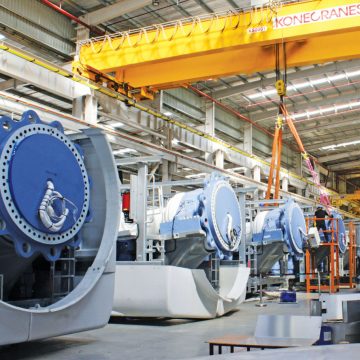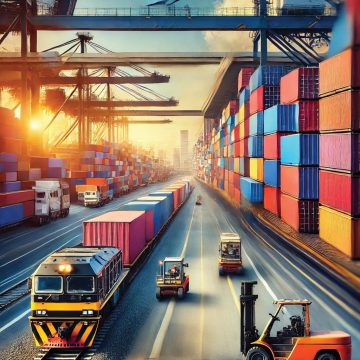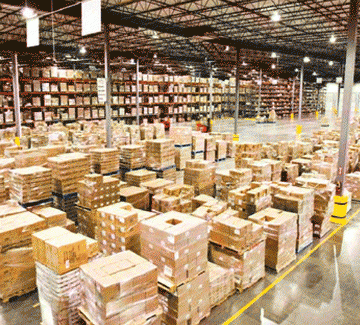India’s energy future isn’t just about getting more megawatts; it’s a journey where wind power helps the country become independent, boosts industry, and supports its goal of becoming net-zero, writes Amit Kansal. India’s renewable energy story has garnered global attention, but one chapter of that story comes with special promise: wind energy. India, once a...
FlashNews:
Waaree Gets ALMM-II Nod for 5.25 GW Solar Cells
Inox Wind Secures Repeat 100 MW Order from Jakson Green
SITA Strengthens India’s Digital Aviation Infrastructure as Passenger Growth Accelerates
India moved from power scarcity to sustainability, says Piyush Goyal
GM Rao Urges Andhra University Alumni to Drive Innovation, Entrepreneurship and India Growth Story
India Begins Hydrogen Car Trials as Minister Joshi Drives Toyota Mirai to Parliament
MNRE Refutes Financing Pause; Calls for Expansion into Upstream Solar Manufacturing
IndiGrid to Acquire Gadag Transmission for ₹3.72 Billion
India Launches First All‑Electric Tug at Deendayal Port, Accelerates Green Maritime Shift
Bharatmala Pariyojana Executes 61% of Phase‑I Highway Targets, Boosts Freight Speed and Connectivity
Waaree Tops India’s Solar Module Shipments in Q3 2025, Reinforces Global Competitiveness
AISATS Expands Nationwide, Launches Ground Handling at Cochin Airport with Future‑Ready Tech
TIL Bags ₹2 Billion Orders Across Defence and Logistics, Validates Dual-Sector Strategy
Indian Railways to Roll Out OTP‑Based Tatkal Window Tickets Nationwide to Curb Misuse
Sanchar Saathi Row: Scindia Defends App as Voluntary, Transparent and Consumer‑Protective Amid Privacy Debate
REIAs Issue 67.5 GW Renewable Energy LoAs Since April 2023 with Zero Cancellations: Joshi
Rail Freight Rises 4.2% in November as Steel, Iron Ore and Fertiliser Volumes Surge
NHAI Partners Reliance Jio to Launch Telecom‑Based Safety Alerts on National Highways
Delhi Airport Becomes India’s First Water‑Positive Major Aviation Hub
Tag: GST
Warehousing, MHE & Logistics Leaders to converge at MultiLogistix Expo Conference & Awards at Yashobhoomi, Delhi on Nov 12-13
The MultiLogistix Expo & Conference 2025, India’s gateway to Smart Logistics, Warehousing, Material Handling and Supply Chain Solutions is a premier event to be held from Nov 12-13 in Delhi, and is supported by National Highways Logistics Management Limited (NHLML), CILT India, and Invest India, among others. MultiLogistix is expected to attract over 5,000 logistics...
GST 2.0 to Unlock Liquidity and Lower Capital Costs for Renewables: Oyster Energy MD
Recent GST cuts are set to unlock liquidity and lower capital costs for renewable energy developers, says Siddharth Bhatia, Managing Director of Mumbai-based independent power producer Oyster Renewable Energy, in conversation with INFRASTRUCTURE TODAY’s Manish Pant. He argues that these reforms—if aligned with Make in India priorities—could accelerate project execution and attract foreign capital. Bhatia...
GST on Drones Slashed to 5% in Major Tax Reform, Boosting India’s UAV Sector
Uniform taxation rate to reduce prices and spur drone adoption across agriculture, defence, and infrastructure. In a landmark move to support emerging technologies and industrial growth, the GST Council has approved a uniform 5 per cent goods and services tax (GST) on all categories of drones. The reform, announced at the 56th GST Council Meeting,...
The effect of GST on warehousing and logistics
It has led to an increase in opportunities for Grade A warehouses “After the implementation of GST, we have witnessed significant growth in the manufacturing and e-commerce sectors as part of the Government’s ‘Make in India’ push,” says Rajesh Jaggi, Vice Chairman-Real Estate, The Everstone Group. “The consistent tax framework coming into place as a...
GST Rates Cut, Affordable Housing Redefined
The slash in GST rates to 5 per cent without ITC from the previous 12 per cent with ITC for premium homes, and to 1 per cent minus ITC for affordable homes from the earlier 8 per cent, gives the beleaguered realty sector the much-needed breathing room and will certainly help it maintain some forward momentum in 2019.
Toll collections to witness double-digit growth in FY2020
Driven by strong growth in medium and heavy commercial vehicle (M&HCV) along with an increase in the wholesale price index (WPI), toll collections are likely to witness significant growth in FY2020.
The compressor market will grow above 20,000-25,000 units a year
Despite price sensitivity of the Indian market remaining a major challenge, Conrad Latham, General Manager, Atlas Copco Compressor Technique, India cites that to be competitive in India, the global players are willing to pay for the value of options that are normally associated with improved energy efficiencies like variable speed drive compressors, permanent magnetic motors, cost-effective adsorption dryers or even higher IE-rated motors.
Need an Integrated Logistic Policy
The logistics industry has always been an underdog and has not received the much-deserved attention yet. Though the sector is full of potential, it is yet to achieve optimal utilisation of resources.
Housing for All by 2022 to attract $ 1.3 trillion
The ancient Chinese curse, 'May you live in interesting times,' certainly has a lot of pertinence to the Indian real estate today. These are doubtlessly the interesting times for the sector, which has transformed significantly over the last decade.










